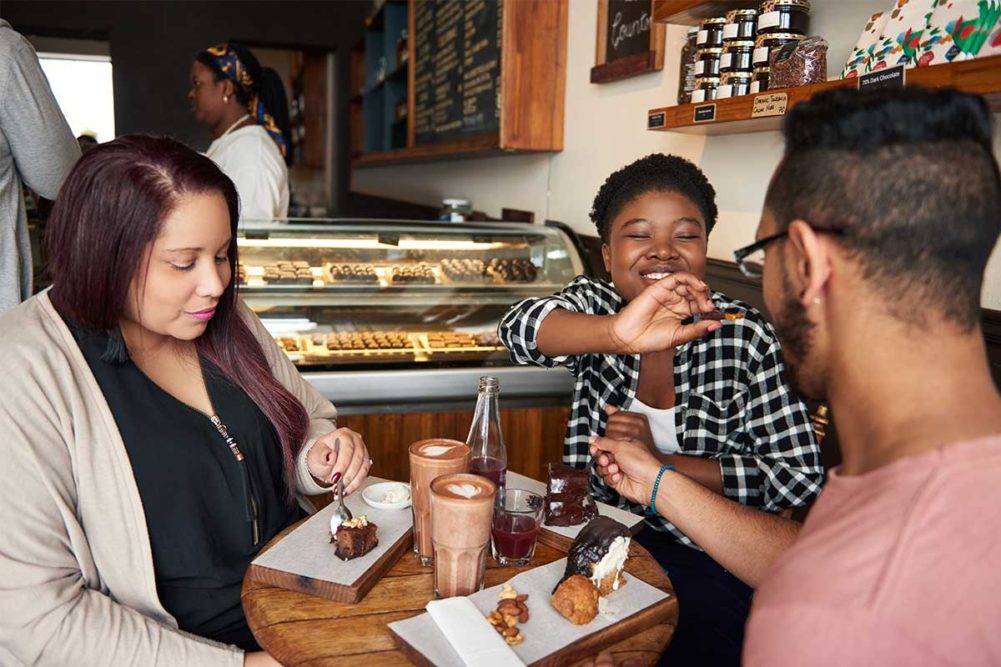Sweet good brands can keep consumers coming back by leaning into emerging demographic trends, launching products that appeal to the priorities of different age groups.
Mintel’s 2023 “US In-Store Bakery” report found that parents are frequent, loyal consumers of in-store bakery (ISB) treats, with purchases increasing as children age.
“Maintaining a hold on the valuable parent target will require positioning the ISB as an affordable and convenient destination that satisfies the whole family,” Mintel stated. “A product assortment that strikes a balance between health, quality and fun can keep parents shopping the perimeter.”
Younger consumers, on the other hand, are less engaged with the in-store bakery than middle-aged consumers.
“However, this age group over-indexes across nearly all measured purchase driving concepts, inclusive of both innovative products and experiences,” Mintel stated. “This audience is ready for the ISB to deliver more than kid-friendly treats.”
To appeal to the younger demographic, Paul Stippich, director of marketing for Otis Spunkmeyer, a brand of Los Angeles-based Aspire Bakeries, observed that a product needs to be “Instagramable” and authentic. For brownies, delivering an authentic experience can be as easy as baking them in a tray to deliver that “just like home” experience, he added.
“Our brownies have a slightly higher edge because they were cut out prior to packaging,” he explained. “Even something as simple as a slight tweak in terms of how you bake it off and cut it can make a big difference.”
Seb Siethoff, chief executive officer of Richmond, Calif.-based Rubicon Bakers, echoed the importance of authentic, shareable products for young shoppers.
“They are ‘in and out’ at the perimeter of the store, at convenience stores, or online, increasingly looking for more unique, better-for-you, sustainable and affordable solutions before they ‘advertise forward’ what they like to others,” he said.
Rubicon Bakers offers vegan varieties of its whole cakes and cupcakes, and is also a certified B-Corp, a certification given to companies meeting high standards of social and environmental performance and transparency.
Across age groups, convenience stores also pose an opportunity for sweet goods, noted Melissa Altobelli, principal, client insights, dairy and bakery vertical, Circana. C-store bakery boosted unit sales 8% in the past year, according to Circana, capitalizing on demand for single-serve and on-the-go treating.
There is more pressure on c-store chains to grow incremental revenue through food and bakery coming out of the pandemic, Stippich said, and snacking and dashboard dining will only continue to grow in this channel.
“But it can’t just be like it was 10 years ago,” he said. “Offerings must intrigue millennial and Gen Z consumers who will be looking for the right brand, the right experience and the right, authentic quality.”
While product innovation can drive consumer engagement and growth, dessert brands shouldn’t overdo it with their new offerings, Stippich said. He emphasized manufacturers should avoid introducing many harder-to-understand concepts. While these products may generate buzz, they likely won’t have the staying power of the classic treats consumers always return to.
“Newstalgia is pushing back to the core with a twist,” he said. “So how can you help consumers prioritize their food dollars by giving them what they’ve loved all along, but with a higher-quality presentation?”
This article is an excerpt from the November 2023 issue of Baking & Snack. To read the entire feature on Sweet Goods, click here.





